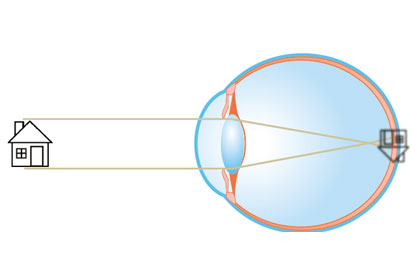
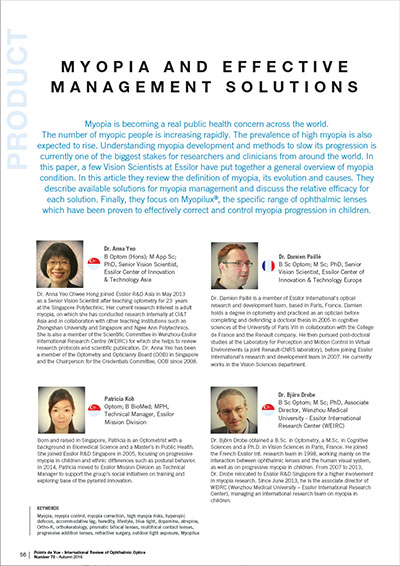 Click here to read the article
Click here to read the article
Myopia is becoming a real public health concern across the world.
The number of myopic people is increasing rapidly. The prevalence of high myopia is also expected to rise. Understanding myopia development and methods to slow its progression is currently one of the biggest stakes for researchers and clinicians from around the world. In this paper, a few Vision Scientists at Essilor have put together a general overview of myopia condition. In this article they review the definition of myopia, its evolution and causes. They describe available solutions for myopia management and discuss the relative efficacy for each solution. Finally, they focus on Myopilux®, the specific range of ophthalmic lenses which have been proven to effectively correct and control myopia progression in children.
Article from the magazine "Point de vue"

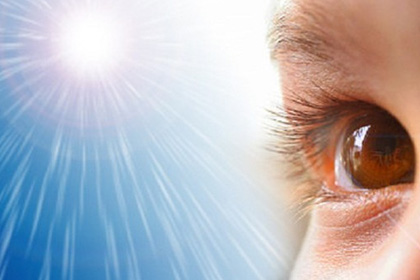
 Click here to read the article
Click here to read the article
There is evidence in many countries globally that the prevalence of myopia is on the rise.
Advances in measurement technology now allow many environmental factors potentially associated with the development and progression of myopia to be quantified reliably and sampled densely. Our recent prospective longitudinal study of Australian schoolchildren, utilising wearable sensor technology has provided the first direct evidence of a significant relationship between personal ambient light exposure and eye growth in childhood;
demonstrating that greater daily light exposure is associated with slower eye growth. These findings support the potential for interventions aimed at increasing daily outdoor light exposure, to reduce the development and progression of myopia in childhood.
Article from the magazine "Point de vue"

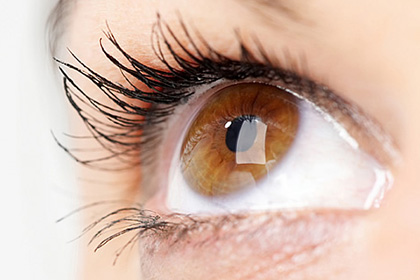
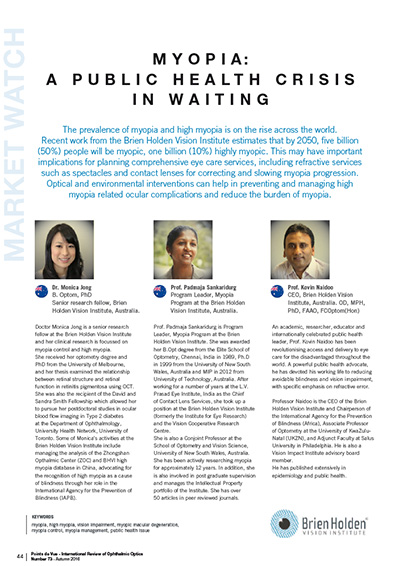 Click here to read the article
Click here to read the article
The prevalence of myopia and high myopia is on the rise across the world.
Recent work from the Brien Holden Vision Institute estimates that by 2050, five billion (50%) people will be myopic, one billion (10%) highly myopic. This may have important implications for planning comprehensive eye care services, including refractive services such as spectacles and contact lenses for correcting and slowing myopia progression.
Optical and environmental interventions can help in preventing and managing high myopia related ocular complications and reduce the burden of myopia..
Article from the magazine "Point de vue"

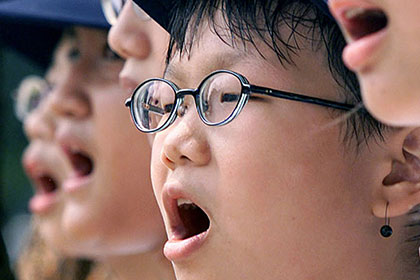
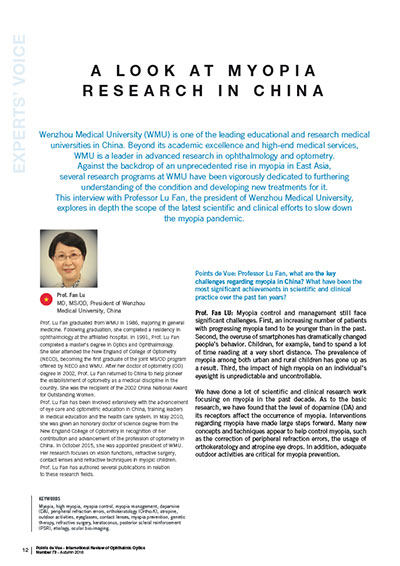 Click here to read the article
Click here to read the article
Wenzhou Medical University (WMU) is one of the leading educational and research medical universities in China. Beyond its academic excellence and high-end medical services, WMU is a leader in advanced research in ophthalmology and optometry. Against the backdrop of an unprecedented rise in myopia in East Asia, several research programs at WMU have been vigorously dedicated to furthering understanding of the condition and developing new treatments for it.
This interview with Professor Lu Fan, the president of Wenzhou Medical University, explores in depth the scope of the latest scientific and clinical efforts to slow down the myopia pandemic.
Article from the magazine "Point de vue"


